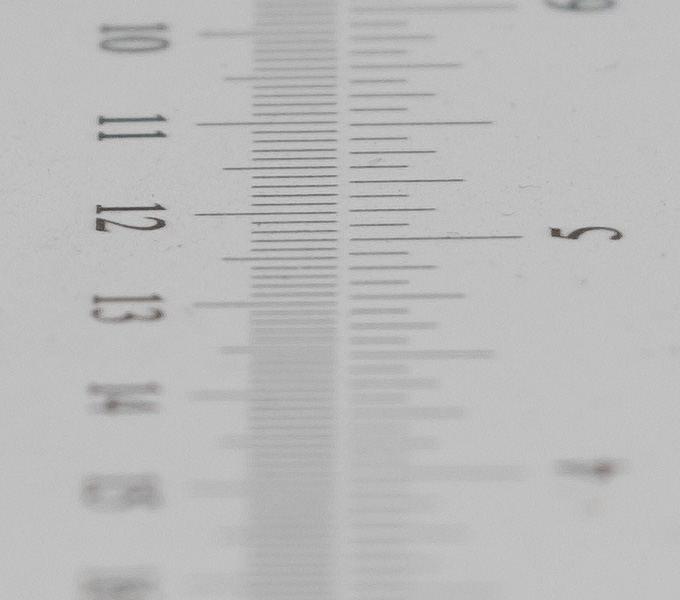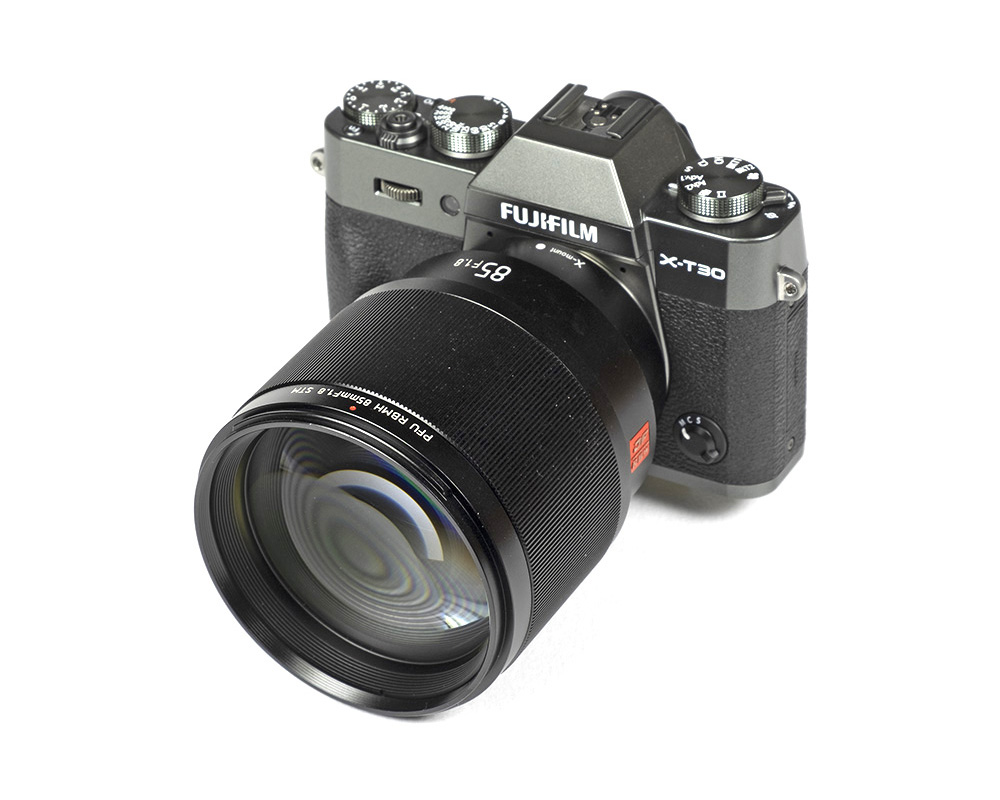Introduction
Let’s start 2020 with something different – the Viltrox PFU RBMH 85mm f/1.8 STM – and something new – our shift to a 26-megapixel test camera (X-T30). While most are probably familiar with the Fujifilm camera, the Viltrox lens may be a bit of an unknown factor for most. If you came across the Viltrox brand so far (if ever), it was probably about accessory items such as adapters or lighting solutions. However, since late 2018 they have been offering lenses as well. Now there are many new Chinese players out there these days and you may think that this is just another one but there is something special about Viltrox or at least the 85mm f/1.8 – it features an autofocus motor, a camera-controlled aperture as well as EXIF data so it can actually be regarded as a mainstream offering. It is also readily available from big shops such as B&H, Adorama or Amazon for as little as 399USD/379EUR – who said that mirrorless lenses have to be expensive? It’s also worth mentioning that this is actually a full-format lens – the E-mount variant is compatible with Sony’s full format cameras.
The build quality is pretty impressive thanks to a tightly assembled all-metal body. You can also feel it because the lens is rather heavy at 636g. The physical length remains constant across the focus range.
The huge, fluted focus ring operates smoothly. Weather-sealing is, unfortunately, not provided but you can’t have it all at this price point. The Viltrox lens doesn’t participate in Fujifilm’s own firmware
update procedures but uses a Micro-USB connector on the lens for this purpose instead. A petal-shaped (plastic) lens hood is provided.

One of the biggest question marks may about the performance of the autofocus motor. After all, it is unusual for such a new player to offer a fully-coupled lens. The Viltrox lens uses an STM (or stepping motor). The AF is fast but you won’t use it for sports/action photography in low light (which is where Fuji cameras still struggle anyway).
Manual focusing works – as usual – “by wire” thus you are driving the AF motor when turning the focus ring. The focus action is pretty precise and as good as on Fujifilm’s own lenses.
Distortion
Unlike many Fujinon lenses, the Viltrox PFU RBMH 85mm f/1.8 STM is fully corrected thus it produces a very low native distortion (pincushion-style) of just 0.3%

Vignetting
As mentioned in the introduction, the Viltrox lens is actually capable of covering a full-format image frame. So does it have an easy play on Fujifilm’s APS-C format sensor when it comes to vignetting?
While the light falloff is reasonably well-controlled at f/1.8, you will still be able to spot a light falloff of 0.9EV (f-stops) in critical scenes. If you use activated image auto-correction, it is a bit less than that. The issue is substantially reduced at f/2.2 and negligible from f/2.8 onward.

MTF (resolution)
Starting with this review, we have moved to a 26 megapixels camera for the tests. The charts scale was calibrated using the Fujinon XF 90mm f/2 R LM WR.
The resolution characteristic of the Viltrox PFU RBMH 85mm f/1.8 STM is very decent. While the Viltrox lens can’t touch the peak performance of the Fujifilm 90mm f/2, it is capable of reaching a very good image quality straight at f/1.8. Stopping down to f/2.2 has little effect but the quality improves at f/2.8 and reaches excellent (just) levels at f/4 – across the image frame. Diffraction is limiting the resolution beyond with a somewhat noticeable impact at f/8. f/11 should be avoided if possible.
The field curvature is marginal. The centering quality of the tested sample was good.
Please note that the MTF results are not directly comparable across the different systems!
Below is a simplified summary of the formal findings. The chart shows line widths per picture height (LW/PH) which can be taken as a measure for sharpness. If you want to know more about the MTF50 figures you may check out the corresponding Imatest Explanations

Chromatic Aberrations (CAs)
Lateral CA (color shadows at the image borders) are well controlled with an average pixel width peaking at 1.1px mark at the image borders at f/1.8. The CAs are lower and quite negligible at medium aperture settings.

Bokeh
If you decide to buy a fast prime lens, you also do so for superior bokeh compared to the zoom lenses – and the Viltrox lens delivers nicely in this respect.
Out-of-focus highlights are beautifully rendered in the image center with no outlining and a very smooth inner zone. Stopping down maintains the highlight circle at f/2.2 but you can spot the edgy aperture shape from f/2.8 already.

The images below illustrate the deterioration of the out-of-focus highlights towards the image corners. The circular shape is kept across a quite broad image field but you can clearly spot “cat eyes” in the image corners at f/1.8 – a vignetting effect. The corner highlight shape improves quite a bit when taking shots at f/2.8 as you can notice below.



The general rendition in the focus transition zones is excellent with very smooth edge transitions both in the image background (shown to the left below) as well as in the foreground (to the right).

Bokeh Fringing (LoCA)
Bokeh fringing – also referred to as LoCAs – is a color fringing effect on the Z-axis. It shows up as purplish halos in front of the in-focus zone and greenish beyond. The effect is visible at f/1.8 albeit it is not extreme. Stopping down to f/2.2 reduces the fringing and there are traces left at f/2.8. The LoCAs are mostly gone from f/4 onward.
Keep in mind that bokeh fringing is normal in all but a handful of very expensive APO lenses.




Sample Images
Competition
Fujifilm maintains a fairly closed ecosystem with just a handful of Zeiss lenses that have been officially sanctioned. As such the competition is rather limited. There is, of course, the already mentioned Fujinon XF 90mm f/2 LM R WR – which is the best lens in this class by some margin – at more than double the price of the Viltrox. A more distant competitor is the Fujinon XF 80mm f/2.8 LM R WR OIS macro. It is substantially slower – and more expensive still – but offers true macro capabilities as well as image stabilization. If you can live without autofocus, there’s the Samyang 85mm F1.8 ED UMC CS which is a little cheaper but generally, we wouldn’t recommend a fully manual fast lens beyond 50mm really.

Visual comparison courtesy of camerasize.com.
The Viltrox PFU RBMH 85mm f/1.8 STM is an attractive medium tele lens for Fujifilm cameras. It is sharp across the image field - especially at medium aperture settings - and it doesn't show any substantial weakness across the other characteristics either. Lateral CAs are low as are image distortions. There is a bit of vignetting at f/1.8 but it's nothing out of the ordinary (on an APS-C sensor at least). A very positive aspect is the quality of the bokeh. Image highlights are nicely rendered at f/1.8 and the blur in the focus transition zones is very creamy. Bokeh fringing (LoCA) is present at large-aperture settings but that's hardly surprising.
The build quality feels very "tanky" due to the all-metal design. Pro photographers may miss weather-sealing but that's a different market segment anyway. Unlike other small manufacturers, Viltrox managed to implement an autofocus motor (STM = stepping motor). The speed is very decent and we had no issues with accuracy. Such a lens is more aligned to portrait or street photography anyway and the AF is plenty fast for that.
It is quite surprising than Viltrox was capable of designing and manufacturing such a mature product as their first shot into the market. Other newcomers struggled much more during their first years (and some still do). Of course, designing a 85mm f/1.8 isn't science fiction but getting all the required acts together at a very attractive price point is an achievement. Thus if you can't or don't want to pay the premium price for a Fujifilm XF 90mm f/2 LM R WR, the Viltrox lens is a worthy candidate for your shopping list.
-
Optical Quality
-
Build Quality
-
Price / Performance


